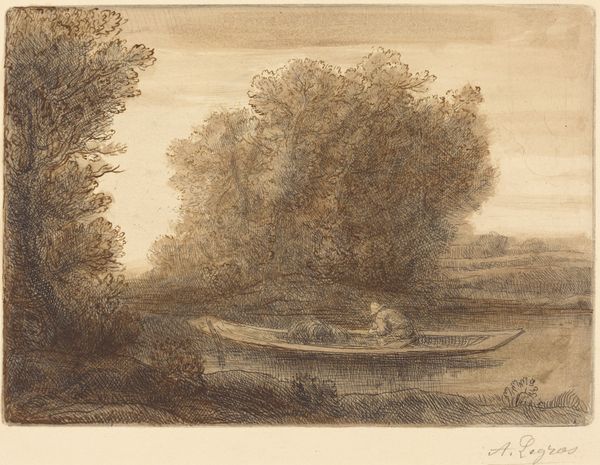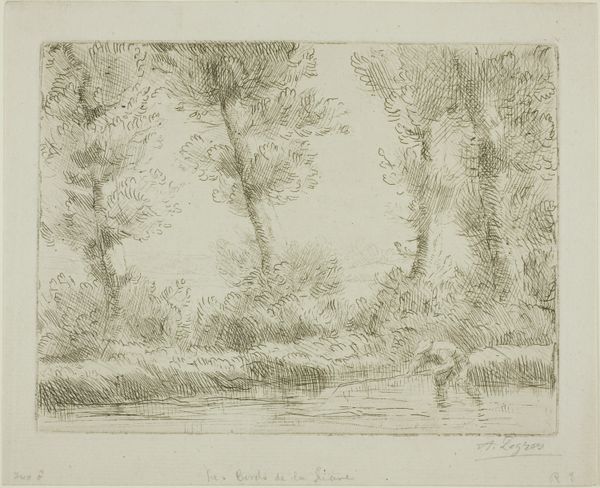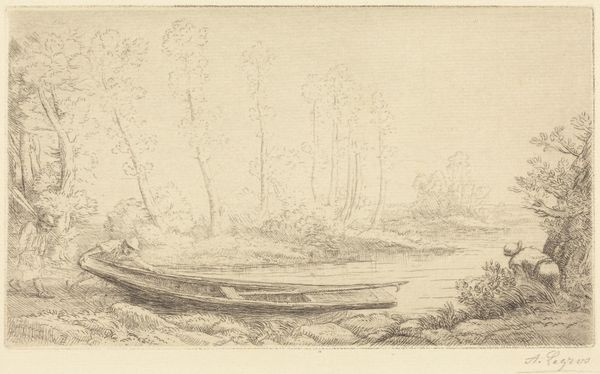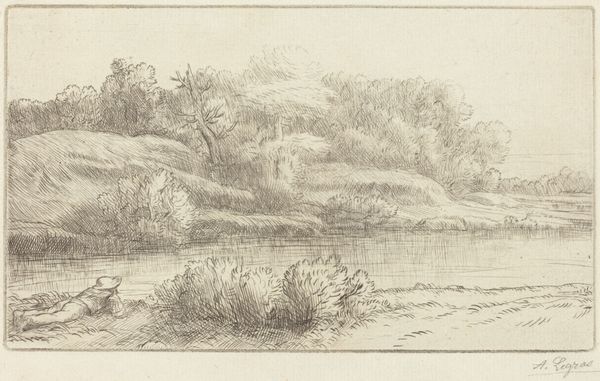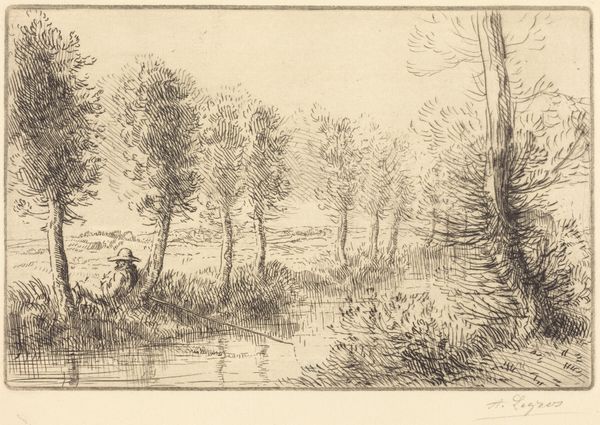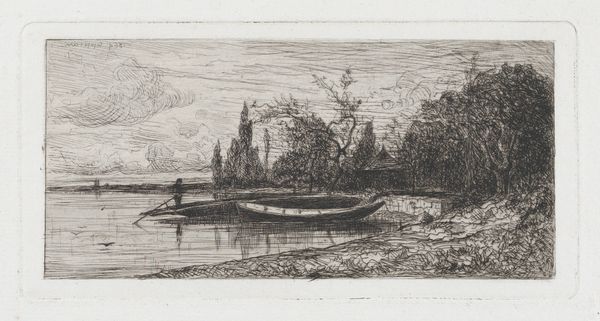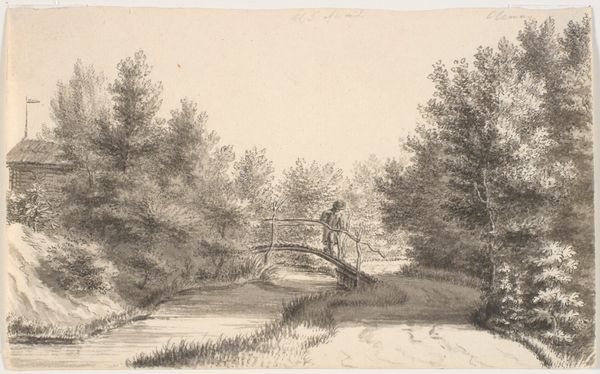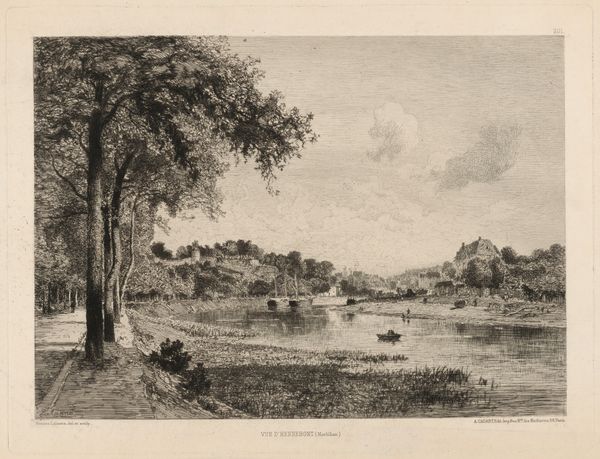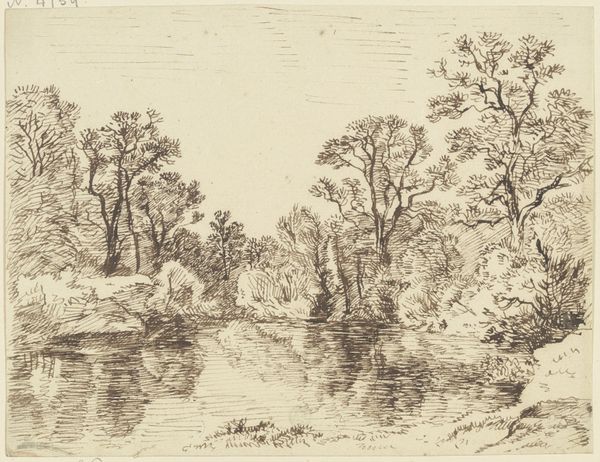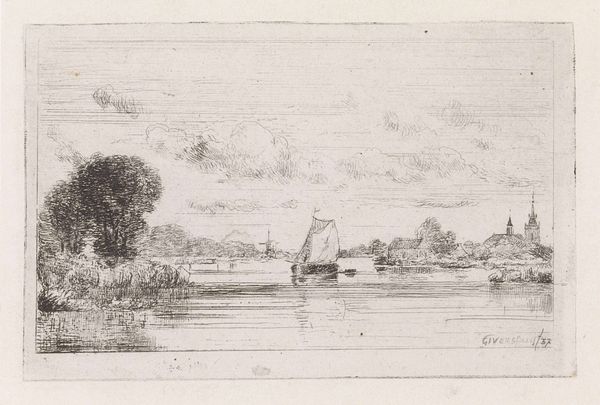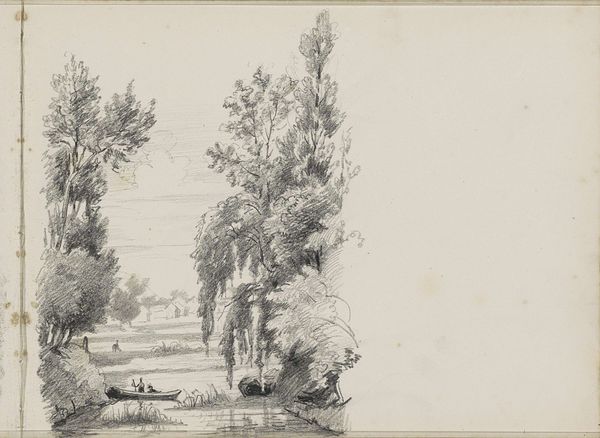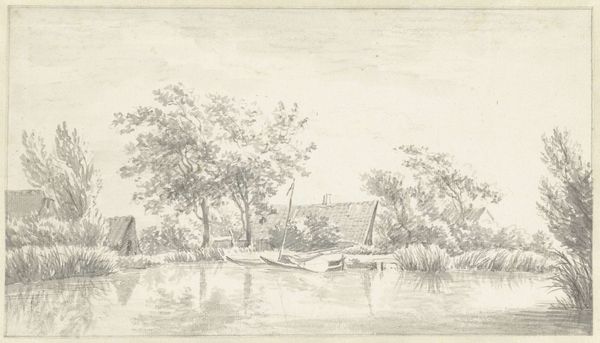
print, etching
# print
#
etching
#
landscape
#
etching
#
pencil drawing
#
realism
Copyright: National Gallery of Art: CC0 1.0
Editor: Alphonse Legros’s “Bend in the River,” done in etching, feels both serene and melancholic to me. I am struck by the textures he was able to create, despite having minimal resources to work with. What can you tell me about how the method of production is connected to what we see in the image? Curator: It's perceptive to consider the material constraints and labor that shaped this etching. Notice how Legros uses hatching and cross-hatching? This wasn't just aesthetic, but necessary. Etching demands a controlled, repetitive labor, doesn’t it? Each line etched into the plate reflects a conscious, physical act. He would need to press down repeatedly. How might such labor connect with his representation of rural life? Editor: I never considered that. So the act of repeatedly pressing down becomes like the farmer with his harvest, bound to labor and the Earth? Curator: Precisely! We might also consider how prints were consumed and by whom. They are reproducible objects. How does that impact its social value in relation to paintings which are obviously one of a kind? Did this make his work available to those who may not have had the social capital to obtain a painting? Editor: So etching flattens hierarchy. Suddenly it makes sense why so many artists utilized print-making techniques as ways to expose injustice. The masses can see themselves depicted and feel united. It all goes back to the artist choosing the proper methods to communicate with their audience! Curator: Exactly. By focusing on the materials, tools, and labor that created this seemingly simple landscape, we gain a deeper understanding of the artist’s world and, in turn, our own. Editor: I learned so much about how artists carefully construct the tools with which to reach people, both aesthetically and socially. I have a lot more to think about!
Comments
No comments
Be the first to comment and join the conversation on the ultimate creative platform.
